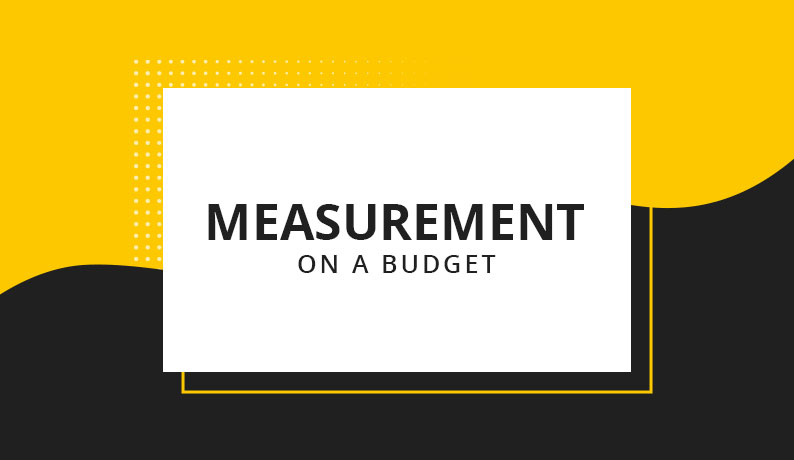It wasn’t uncommon for PR professionals to ignore measurement a few years ago. However, things are changing now. Today, despite calling for a monitoring discussion, PR professionals bring up measurement questions also in the same discussion. Still, most measurement discussions do not convert into measurement projects for many reasons. Budget is often one of the factors. The good news is you do not have to have deep pockets to incorporate media measurement into your PR programs. Measuring does not have to be expensive if we keep in mind certain basic principles while designing our measurement programs.
When PR professionals understand the power and potential of measurement, they get carried away. They expand the scope to cover issues, regions and players which may or may not be required for their first measurement effort. All this adds to the cost of measurement. Here are some tips on how to get started on your measurement journey while keeping the costs in check.
First and foremost, we need to be clear about our organizational objectives and accordingly communication objectives. We also need to identify the right (target) audience whom we want to communicate with. This will in turn help us scope our measurement approach. The very first principle of the Barcelona Principles 3.0 also recommends the same.
Principle 1: Setting Measurable Goals is an Absolute Prerequisite to Communication Planning, Measurement, and Evaluation.Although outputs alone are directional and not absolute measures, they offer a budget-friendly way to start your measurement journey. In Barcelona Principles
Principle 2: Measurement and Evaluation Should Identify Outputs, Outcomes, and Potential Impact.3.0, Principle 2 clearly states that organizations should measure outputs, outcomes and potential impact. But for the purpose of this article, and for organizations who have not yet started their measurement journey, let’s start with output measurement with few examples:
Example 1:
A new company, Company X, is entering the gold loan market, which already has established players such as Muthoot and others. The PR campaign’s goal is to raise public awareness of the company and its services. Also, the company’s focus is currently on Southern markets. If we were to translate the same into objectives* for measurement, they may look like the following:
- Increase in number of articles by 25% on a quarterly basis
- 75% of the articles in Target Media
- 80% of the articles in Southern Editions
As you can see, all the above parameters are quantitative and can be easily measured with Quantitative Analysis without spending a lot of money.
Important point to remember:
Measuring only the above parameters should be sufficient. Adding more variables like sentiment, messaging, etc., which increase the measurement effort and the cost, may be unnecessary at this stage. Sometimes, quantitative measurement is sufficient for short-term campaigns with simple objectives.
Example 2:
Company Y is a well-established company in the Consultancy space. PR’s primary objective here is to establish the company and its partners as thought leaders, and most of their efforts are directed towards that goal. If we were to convert the same into SMART Output objectives*, they may look like the following:
- 35% Share of Voice Vis-à-vis Competition (basis no. of articles)
- 15% increase in Thought Leadership pieces (Opinion Pieces/Interviews/Quotes) Vs Competition
- Highest number of articles on Surveys/Reports Vs Competition
Since the articles would have to be scrutinized in depth and qualified based on these parameters, this is a qualitative analysis that requires more effort. This will also have to be done for all articles appearing on client and competition in all publications. Thus, we would have to analyse a large number of articles. All this will make the effort expensive.
However, to accomplish this analysis within budget, we may take the following approaches:
- Only include the competitors who are direct competitors of our firm in the analysis and not all companies operating in the space by carefully reviewing their names. Adding additional competitors will increase the cost unnecessarily and may not serve any purpose. Therefore, we should measure our direct competitors only.
- The target media universe is another important consideration. Considering the company is in the consulting business, their target audience may typically be readers of Business Newspapers, Business Magazines and Top English Mainlines. For that reason, coverage appearing only in this target media should be examined. Analysis of any article appearing in any other publication outside of this universe would be a waste of time and money.
- Sampling Approach is an industry standard practice taken by companies where the volume of coverage is high, and budget is a challenge. For this, we may take various approaches such as:
- Reviewing only coverage appearing in top publications within the Target Media Universe
- Analyzing only prominent coverage (Headline Mentions / 2-3 mentions within article, etc.) by identifying such coverage with the help of technology thus reducing the manual effort and cost.
In my experience, the results of the sampling approach are almost as good as those obtained from the analysis of all articles. Due to the significant cost savings that are achieved with this approach, it is highly recommended for companies that receive a lot of media attention.
By using these methods, we are able to incorporate measurement into our PR campaigns within our budget constraints without burning a hole in our pocket. Rather than presenting a laundry list of what we want to measure and later complaining that measurement is expensive, we need to be clear about our objectives and accordingly what needs to be measured.
As mentioned earlier, the above are few examples of Output Measurement. In a similar manner, we may plan to measure Outtakes and Outcomes within our budget.
Wishing you a very happy measurement journey!
This post was originally published on Exchange4Media here.


Recent Comments